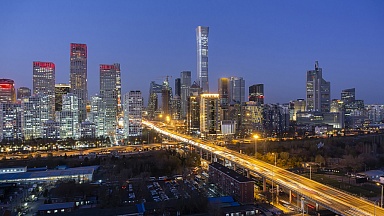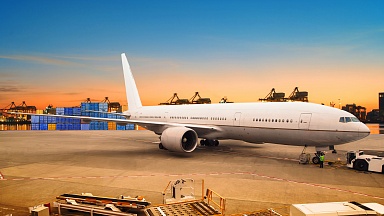China’s economy is projected to slow in 2022. After a strong rebound in the first half of 2021, economic activity in China cooled rapidly in the second half of this year. We project real GDP growth to reach 8.0 percent this year, before moderating to 5.1 percent in 2022. The slowdown reflects less-favorable base effects, diminished support from exports, and the government’s continued deleveraging efforts. Though growth is projected to slow next year, we expect momentum to pick up, aided by a more supportive fiscal stance.
Downside risks to China’s economic outlook have increased. Renewed domestic COVID-19 outbreaks, including the new Omicron variant, could lead to larger disruptions in economic activity. A severe and prolonged downturn in the highly leveraged property sector poses another downside risk which could have significant economy-wide impacts.
In the short term, ongoing efforts to address excessive leverage in the corporate sector should be maintained. The authorities should stand ready to provide policy easing, should domestic demand remain sluggish amid the lingering pandemic and the ongoing adjustment in the real estate sector, without abandoning their efforts to contain a further build-up of financial sector risks.
Over the medium term, China faces a difficult rebalancing act as it aims to transition to high-quality growth. The pandemic and subsequent recovery have worsened domestic and external economic imbalances. Furthermore, the traditional playbook of boosting growth through infrastructure and real estate investment has run its course.
Three particular challenges stand out: first, rebalancing from external to domestic demand and from investment and industry-led growth to greater reliance on consumption and services, second shifting from the significant weight placed on state leadership and regulation to a greater role for markets and the private sector, and third transitioning from a high to a low-carbon economy.
Structural reforms could help with this rebalancing act. The following policy options, which are mutually reinforcing, could help China mitigate the trade-offs and accelerate the transition to high-quality growth.
First, strengthening corporate and bank resolution frameworks would facilitate an orderly exit of weak or failing firms and would contribute to mitigating moral hazard. Addressing distortions in the access to credit could support the shift to more dynamic private sector led growth.
Second, shifting the attention to remaining barriers to market competition could spur innovation and productivity growth. Further opening-up of the protected services sector could improve access to high quality services and support the rebalancing towards high value service jobs. Lifting remaining restrictions on labor mobility by abolishing the hukou for all urban areas would equally support the growth of vibrant service economies in China’s largest cities.
Third, to support the rebalancing towards domestic consumption fiscal reforms could aim to create a more progressive tax system while boosting social safety nets and spending on health and education.
Finally, the wider use of carbon pricing along with power sector reforms and the development of a wider set of green financing instruments, would help accelerate China’s low carbon transition while encouraging green innovation, thereby boosting medium-term growth prospects.


